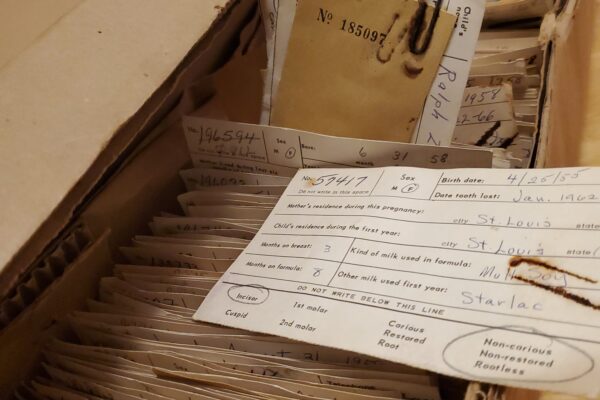Sep 28, 2007
Trenton Times
A coalition has recently been formed to push for a 20-year license extension for the Oyster Creek nuclear reactor near Toms River. The group, called the New Jersey Affordable, Clean, Reliable Energy Coalition (NJACRE), is dedicated to “increasing public awareness of the need to keep existing clean energy sources.”
NJACRE is funded by Exelon, whose subsidiary AmerGen operates Oyster Creek. Exelon, a highly profitable multibillion dollar corporation, owns more U.S. nuclear reactors than any other company. So when NJACRE declares Oyster Creek is “clean,” is it believable, or is Exelon just trying to use its muscle to further pad its pockets?
The U.S. Nuclear Regulatory Commission has approved 20 year license extensions for 47 of 47 applications, nearly half of the 104 U.S. reactors. Exelon may have expected the same rubber-stamp of approval when it asked the NRC to grant 20 more years for Oyster Creek, the oldest reactor in the nation, whose license expires in April 2009.
But the request faces strong public opposition. Both the New Jersey Department of Environmental Protection and a coalition of citizens groups have legally challenged it. Many local residents have voice health and safety concerns been voiced at various NRC hearings in the past two years.
So is Oyster Creek really clean? Exelon’s new group may declare it, but first, a review of the health and safety facts should be done.
Any nuclear reactor is a potential weapon of mass destruction. Its core and waste disposal area hold hundreds of times the radioactivity released from the Hiroshima bomb. A large-scale release of radioactivity, either from mechanical failure or act of sabotage, would constitute the worst environmental disaster in U.S. history – especially if it occurred at Oyster Creek, just 60 miles from New York City and Philadelphia. Safe evacuation after a meltdown is not possible, and thousands would suffer acute radiation poisoning or develop cancer.
Oyster Creek may not just pose potential harm to people, but actual harm. All reactors routinely release over 100 chemicals, created only in nuclear reactors and weapons, into the local air and water. Included in this mix are Strontium-90, which seeks out bone, Iodine-131, which attaches to the thyroid gland, and Cesium-137, which enters the soft tissues. These chemicals enter the body through breathing and the food chain. Each is radioactive, attacks healthy cells, and are especially harmful to the fetus, infant, and child. Some decay quickly, while some remain in the body for many years.
Oyster Creek has emitted the most airborne radioactivity of any U.S. reactor, five times more than at the 1979 partial meltdown at Three Mile Island. A recent study suggests strongly that these emissions are entering local bodies. Lab testing of over 500 New Jersey baby teeth, most near Oyster Creek, found that average levels of radioactive Strontium-90 doubled from the late 1980s to the late 1990s.
Cancer rates close to Oyster Creek raise further questions about whether radioactivity released from the reactor has actually harmed people. Ocean County, where Oyster Creek is located, has the highest cancer incidence rate of any New Jersey county, followed by Monmouth County (located directly downwind, to the north). Death rates in Ocean and Monmouth are actually below the U.S. for all causes – except for cancer.
In the 1990s, a large cluster of children suffering from cancer was discovered in Toms River, close to the plant. A six-year, $10 million study by the state Health Department found no environmental cause of the cluster – even though the matter still remains a mystery.
There is no obvious reason why cancer rates in Ocean and Monmouth Counties should be high. The two-county area has above-average levels of income and education, and below-average levels of poverty and non-English speakers. It also has access to world-class medical care in New York City and Philadelphia. While cancer may have many potential causes, Oyster Creek should be considered one of them.
If federal regulators approve the 20-year license extension, the aging reactor will continue to produce hazardous radioactivity. More will be emitted into the environment and enter human bodies. The already staggering amount of high-level waste will grow, and remain at Oyster Creek for the foreseeable future (plans for a permanent site in Nevada are lagging), and would mean more casualties if a meltdown occurred.
If regulators reject the extension, Oyster Creek would close in April 2009. New Jersey would lose 7% of its electricity. This amount could be made up through more efficient products, conservation, and use of safe energy sources. And if the pattern near other closed reactors were repeated, local health would improve; specifically, infant deaths and cancer rates would decline.
If the coalition funded by Exelon truly endorses awareness of clean energy, it should consider all relevant evidence on safety and health, and present it to the public. Simply declaring that the Oyster Creek reactor is clean may result in avoidable suffering.
Joseph J. Mangano MPH MBA is Executive Director of the Radiation and Public Health Project, a research and education group based in New York.

